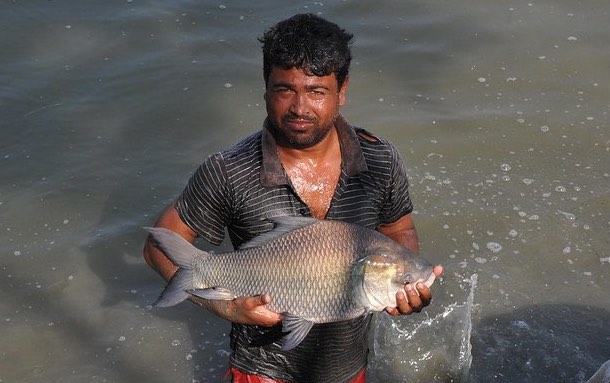The making of Bangladesh's Blue Revolution
- From
-
Published on
06.11.19
- Impact Area

Though fish has long been the largest source of protein in Bangladeshi diets, for decades persistent high prices made it difficult for most to acquire. In the early 1990s, per capita annual fish consumption was a low 10 kilograms. In 2005, the UN Food and Agricultural Organization (FAO) suggested that even reaching a per capita annual consumption of 18 kg would be a remarkable improvement. But only five years later, national survey estimates put the annual per capita consumption of fish in Bangladesh at 23 kg.
It was the exponential growth in Bangladesh’s aquaculture industry that made the difference. This remarkable transformation is assessed and documented in the new IFPRI book The Making of a Blue Revolution in Bangladesh: Enablers, Impacts, and the Path Ahead for Aquaculture, edited by South Asia Director Shahidur Rashid and Senior Research Fellow Xiaobo Zhang. The book lays out the factors that led to this revolution, the implications for poverty and welfare, and the prospects for aquaculture going forward. It was launched at an event Oct. 27 in Dhaka.
Photo Credit: Finn Thilsted/WorldFish
![]()
Related news
-

ICRISAT to Deliver World-Class Services as CGIAR’s Breeding Resources South Asia Hub
International Crops Research Institute for the Semi-Arid Tropics (ICRISAT)07.07.25-
Biodiversity
-
Food security
Strategic collaboration to scale innovation and deliver harmonized, high-quality support across CGIA…
Read more -
-

Shaping policy changes for a sustainable cropping system in Uttar Pradesh, India
International Rice Research Institute (IRRI)03.07.25-
Food security
by Dr. Proloy Deb and Dr. Swatantra Dubey The Central Plain region of Uttar Pradesh…
Read more -
-

KOICA, UPLB, IRRI Partnership Establishes a Genomic Powerhouse to Future-Proof Agriculture
International Rice Research Institute (IRRI)01.07.25-
Food security
LOS BAÑOS, Philippines (26 June 2026) — KOICA, UPLB, and IRRI came together to showcase…
Read more -
